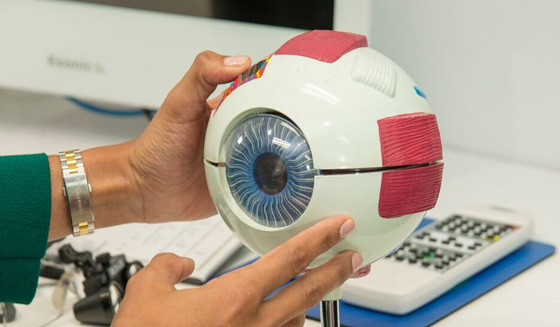Your cornea is the clear window part at the front of each eye. It needs to be clear and normally shaped for you to see properly.
If your cornea is damaged or diseased, your vision can be affected.
A specialist eye surgeon may be able to restore your vision with a corneal transplant. This involves replacing the damaged part of your cornea with healthy tissue from a donor.
Advances in corneal transplantation mean that we no longer need to replace the whole cornea. We can now target only the part that is affected. This makes the procedure safer and reduces the risk of rejection.
There are different types of corneal transplants based on the number of layers of the cornea that are replaced.

What happens during corneal transplant surgery?
Specialist eye surgeon Dr Tess Huynh usually performs corneal transplants under local anaesthetic and sedation. You’ll be awake but relaxed and you will not experience any pain during surgery. In some cases, general anaesthetic may be recommended.
During the 1–2 hours that surgery takes, your eye surgeon uses a special instrument called a trephine. This works like a very precise cookie cutter and removes a round section of damaged cornea. A matching piece is cut from the donor’s cornea and placed onto your eye. It is then stitched into place with ultra-fine sutures.
What happens after corneal transplant surgery?
Most people stay in hospital overnight after a corneal transplant. But some do go home the same day. You’ll need to have several follow up appointments to check that the transplant is healing.
Do not swim or lift anything heavy until you have checked with your surgeon.
The cornea tends to heal slowly. Your doctor may ask you to wear a protective shield over your eye to keep it safe while it heals. You’ll also need to use eye drops for at least several months after the transplant.
The stitches may remain in your eye for months or years. Your surgeon can remove them in a simple procedure during an office visit.
Rejection of the transplant is rare and it’s usually fully reversible if you find it early enough. Report any new irritation or vision loss to your doctor straight away so that you can be prescribed appropriate medication.
Complications can occur after corneal transplant. The risk depends on how many layers of cornea are transplanted. Complications include scarring, damage to other parts of the eye and leakage from the transplant. The transplant may change the shape of your cornea causing you to need glasses or contact lenses.
Most people make a good recovery. But it can take up to a year for your vision to improve. It’s likely that your new cornea will last for at least 10 years.
